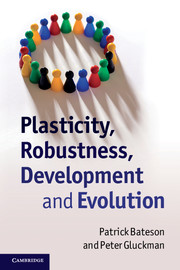Book contents
- Frontmatter
- Contents
- Preface
- Acknowledgements
- 1 Setting the scene
- 2 Clarifications
- 3 Developmental robustness
- 4 Plasticity
- 5 Integration of robustness and plasticity
- 6 Current function of integrated developmental processes
- 7 Evolution of developmental processes
- 8 Impact of developmental processes on evolution
- 9 Development and evolution intertwined
- References
- Index
3 - Developmental robustness
Published online by Cambridge University Press: 05 August 2011
- Frontmatter
- Contents
- Preface
- Acknowledgements
- 1 Setting the scene
- 2 Clarifications
- 3 Developmental robustness
- 4 Plasticity
- 5 Integration of robustness and plasticity
- 6 Current function of integrated developmental processes
- 7 Evolution of developmental processes
- 8 Impact of developmental processes on evolution
- 9 Development and evolution intertwined
- References
- Index
Summary
When Carl Linnaeus developed his classification of living organisms in the eighteenth century, he was probably clear in his own mind just what constituted a species. Each one was clearly distinct physically and could be recognised as such. It was God-given. Even when the development of evolutionary theory took off with the publication of Charles Darwin's On the Origin of Species, biologists continued to use the familiar Linnean binomial of genus and species for each organism. This was because species recognition was assumed by many to be straightforward and because of the presumed continuity over time from distinct ancestor to distinct descendant. Such views were challenged at the time, most notably by the French biologist Jean-Baptiste Lamarck, and in modern times the definition of a species is a source of much controversy among biological theorists. Nevertheless, the readily recognised features of a given species are generally familiar to anyone who has used one of the innumerable field guides or botanical keys. Such constancies raise an issue which is central to this book. Something about a house sparrow ensures that no member of its species becomes a crow. Gross atypical morphologies occur, of course, but they are usually dysfunctional and in the past were termed ‘monsters’. Many structural attributes of an organism, such as the number of limbs or digits, are invariant and the molecular basis of this consistency of developmental pattern is increasingly understood.
- Type
- Chapter
- Information
- Plasticity, Robustness, Development and Evolution , pp. 20 - 30Publisher: Cambridge University PressPrint publication year: 2011



